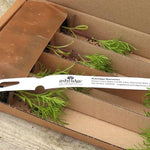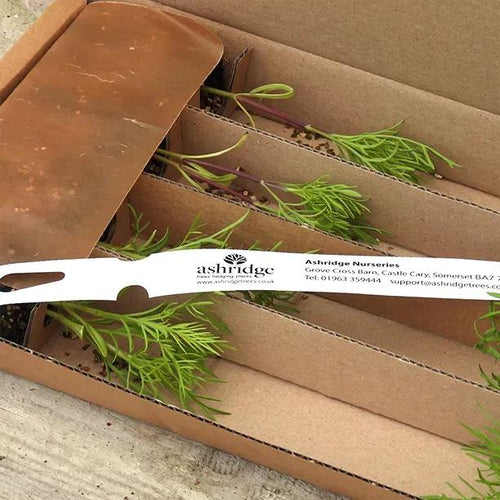Antiquity Cosmos Plants
'Antiquity' is a rather special variety of cosmos, in a number of ways. First, the colour. Antiquity opens a rich burgundy red, with deep plum at the base of each petal. It then fades gracefully to shades of salmon, bronze and rose, like a beautiful antique tapestry. The flowers are daisy-like and open, so a real draw for bees, butterflies and other useful garden pollinators. Like all cosmos varieties, it's a real 'do-er', flowering on and on all summer, from June right into the colder months of November, and sometimes beyond. This is always helped with judicious and timely deadheading of the flowers – the more you deadhead, the more this cosmos will flower. At 60cm, Antiquity is also smaller than a lot of the other cosmos varieties, so you won't need to stake it to keep it from flopping over in late summer. There are plenty more Cosmos to choose from here.
Features
If you've fallen for the charms of Antiquity, then the best place to plant is at the front of a sunny border, or in pots - again, in the sun. And wait a little while before you plant them out if your seedlings are mini, or you may find they fall prey to slugs and snails if they're not sturdy enough to cope with a nibble or two. Create drifts of colour by planting Antiquity in bold groups, ideally – or drift in and out with other, slightly taller varieties of Cosmos, such as Sonata White, a lovely pure white contrast to Antiquity's subtle shades. Its faded colours would tone beautifully in a big terracotta pot, underplanted with some burgundy heucheras perhaps, with dark-leaved cannas or dahlias for height.
Features
- Half-hardy Annual
- Colour: Pink
- Height: 60cm
- Planting Months: April to June/July
- Flowering: June to November
- Plant Spacing: 30cm
- Foliage: finely cut
History & Trivia
Cosmos are sometimes known as Mexican asters, as they're originally from Mexico, where they grow as perennials. They're not hardy enough for that here, so we grow them as annuals in the UK.

 Secure, One-Tap Checkout
Secure, One-Tap Checkout
 Hand Picked, Delivered to Your Door!
Hand Picked, Delivered to Your Door! 1 Year Bareroot Guarantee
1 Year Bareroot Guarantee






